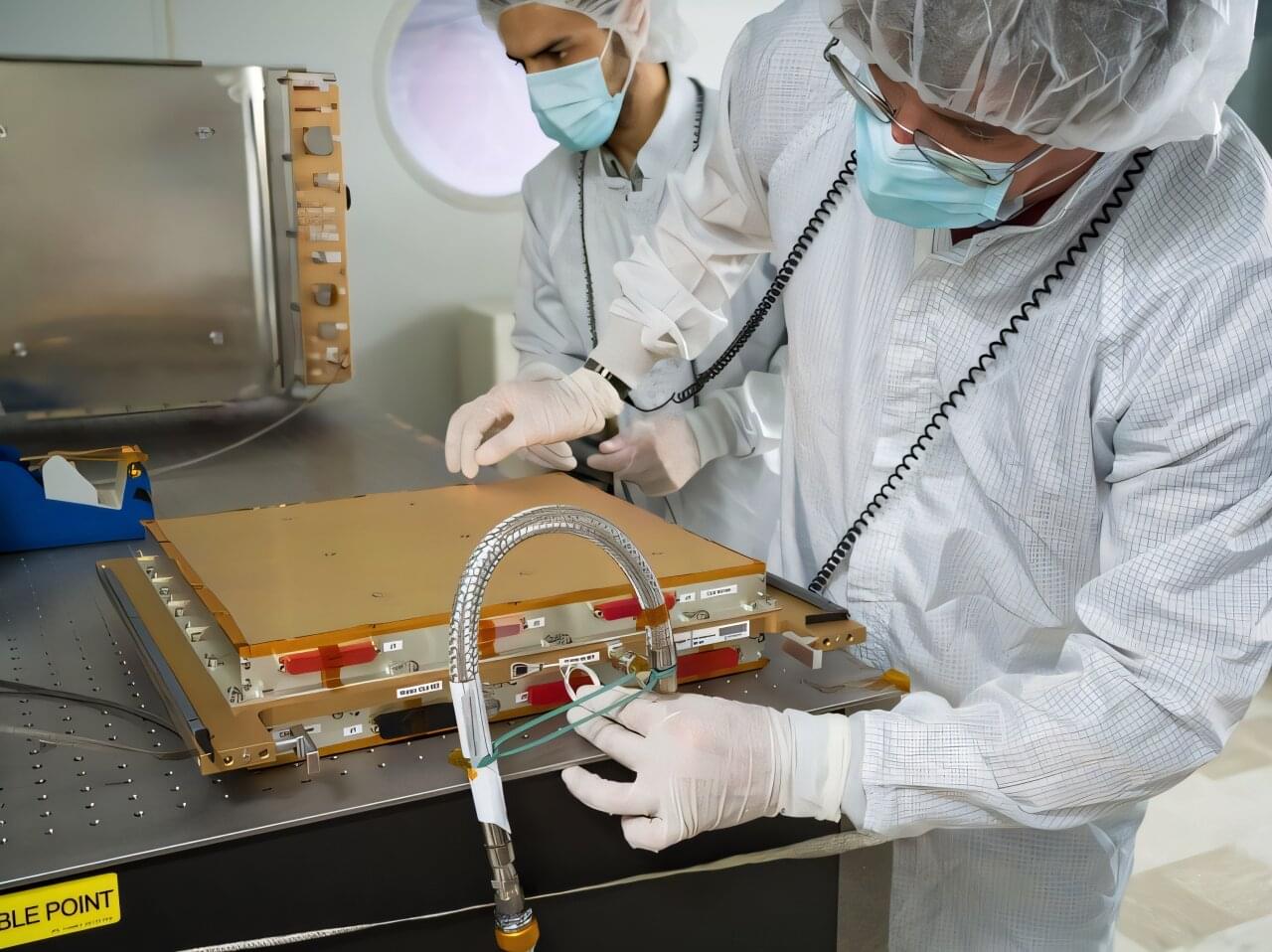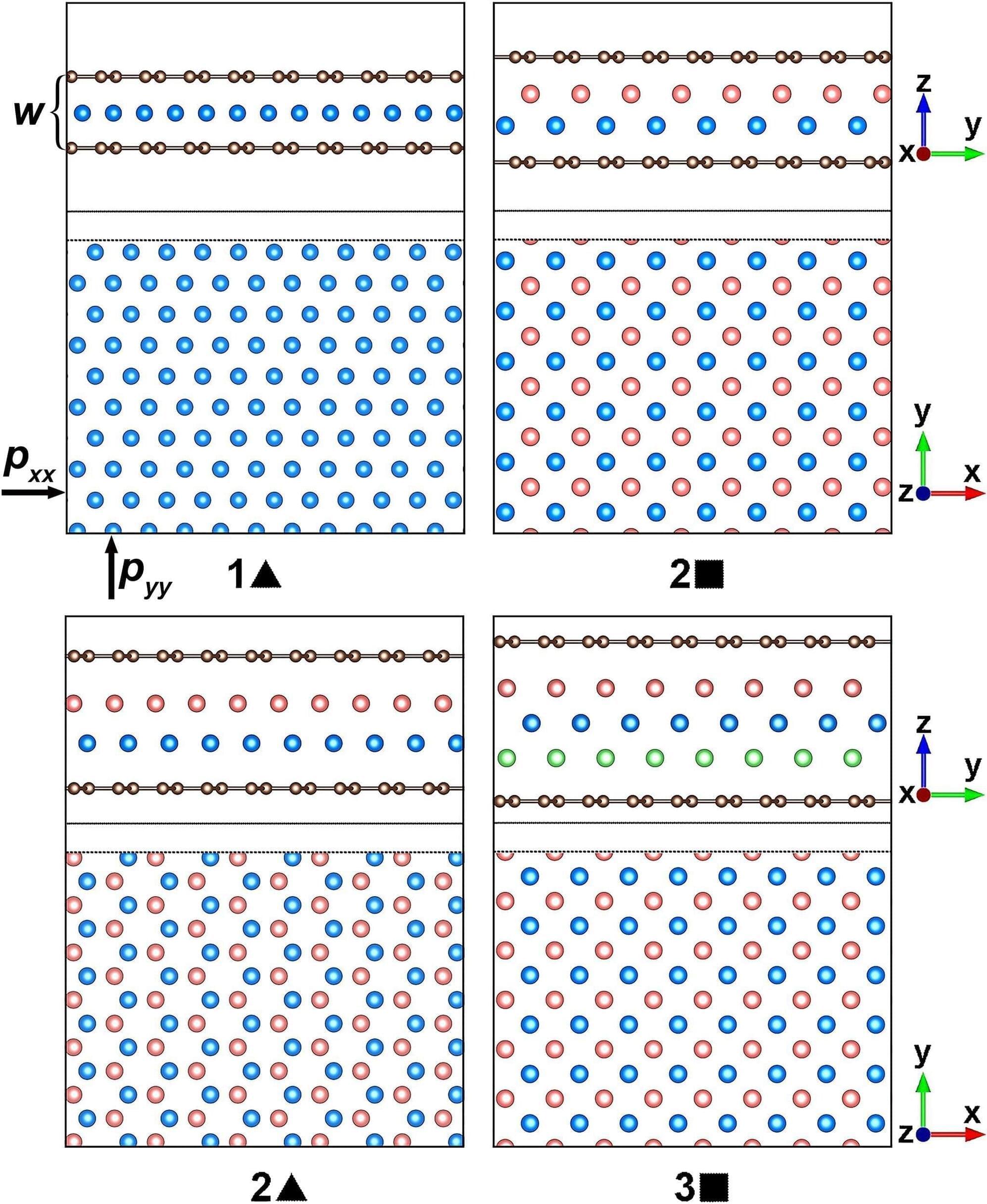To create useful randomness in a quantum computer, you could add more quantum bits, but using quantum chaos does the trick too




Quantum technologies, which leverage quantum mechanical effects to process information, could outperform their classical counterparts in some complex and advanced tasks. The development and real-world deployment of these technologies partly relies on the ability to transfer information between different types of quantum systems effectively.
A long-standing challenge in the field of quantum technology is converting quantum signals carried by microwave photons (i.e., particles of electromagnetic radiation in the microwave frequency range) into optical photons (i.e., visible or near visible light particles). Devices designed to perform this conversion are known as microwave-to-optical transducers.
Researchers at the California Institute of Technology recently developed a new microwave-to-optical transducer based on rare-earth ion-doped crystals. Their on-chip transducer, outlined in a paper published in Nature Physics, was implemented using ytterbium-171 ions doped in a YVO4 crystal.

Exactly 100 years ago, famed Austrian physicist Erwin Schrödinger (yes, the cat guy) postulated his eponymous equation that explains how particles in quantum physics behave. A key component of quantum mechanics, Schrödinger’s Equation provides a way to calculate the wave function of a system and how it changes dynamically in time.
“Quantum mechanics, along with Albert Einstein’s theory of general relativity are the two pillars of modern physics,” says Utah State University physicist Abhay Katyal. “The challenge is, for more than half a century, scientists have struggled to reconcile these two theories.”
Quantum mechanics, says Katyal, a doctoral student and Howard L. Blood Graduate Fellow in the Department of Physics, describes the behavior of matter and forces at the subatomic level, while general relativity explains gravity on a large scale.

Future space missions could use quantum technologies to help us understand the physical laws that govern the universe, explore the composition of other planets and their moons, gain insights into unexplained cosmological phenomena, or monitor ice sheet thickness and the amount of water in underground aquifers on Earth.
NASA’s Cold Atom Lab (CAL), a first-of-its-kind facility aboard the International Space Station, has performed a series of trailblazing experiments based on the quantum properties of ultracold atoms. The tool used to perform these experiments is called an atom interferometer, and it can precisely measure gravity, magnetic fields, and other forces.
Atom interferometers are currently being used on Earth to study the fundamental nature of gravity and are also being developed to aid aircraft and ship navigation, but use of an atom interferometer in space will enable innovative science capabilities.

In physics, a phase transition is a transformation of a substance from one form to another. They happen everywhere, from beneath the Earth’s crust to the cores of distant stars, but the classic example is water transitioning from liquid to gas by boiling.
Things get much more complex when physicists zoom in on the minuscule quantum realm or work with exotic matter. Understanding phase transitions rewards both increased knowledge of fundamental physics and future technological applications.
Now researchers have found out how thin layers of noble gases like helium and metals like aluminum melt in confined spaces by topological excitations. In the study, the layers were confined between two graphene sheets at high pressures.
A new way of explaining gravity could bring us a step closer to resolving the heretofore irresolvable differences it has with quantum mechanics.
Physicists Mikko Partanen and Jukka Tulkki at Aalto University in Finland have devised a new way of thinking about gravity that they say is compatible with the Standard Model of particle physics, the theory describing the other three fundamental forces in the Universe – strong, weak, and electromagnetic.
It’s not quite a theory of quantum gravity… but it could help us get there.


Researchers at the University of Rochester and Rochester Institute of Technology recently connected their campuses with an experimental quantum communications network using two optical fibers. In a new paper published in Optica Quantum, scientists describe the Rochester Quantum Network (RoQNET), which uses single photons to transmit information about 11 miles along fiber-optic lines at room temperature using optical wavelengths.
Quantum communications networks have the potential to massively improve the security with which information is transmitted, making messages impossible to clone or intercept without detection. Quantum communication works with quantum bits, or qubits, that can be physically created using atoms, superconductors, and even in defects in materials like diamond. However, photons—individual particles of light—are the best type of qubit for long distance quantum communications.
Photons are appealing for quantum communication in part because they could theoretically be transmitted over existing fiber-optic telecommunications lines that already crisscross the globe. In the future, many types of qubits will likely be utilized because qubit sources, like quantum dots or trapped ions, each have their own advantages for specific applications in quantum computing or different types of quantum sensing.
